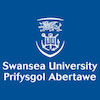Funding provider: Royal Society
Subject areas: Optoelectronics, Quantum Information Science, Molecular Materials, Photophysics, Spin
Project start date:
- 1 October 2022 (Enrolment open from mid-September)
Supervisors:
- Dr Emrys Evans (Department of Chemistry, Swansea University)
- Dr Matthew Davies (Materials Science and Engineering and Chemical Engineering, Swansea University)
Aligned programme of study: PhD in Chemistry
Mode of study: Full-time
Project description:
A 4-year PhD position funded by the Royal Society is available in the labs of Dr Emrys Evans ( RED Group) and Dr Matthew Davies ( SPECIFIC).
Technology advances are drivers for studying new, fundamental behaviour of materials: from more energy-efficient generation, lighting and displays for sustainable human activity, to next-generation platforms for the most secure communication and sensitive sensors from quantum behaviour. Our understanding of materials chemistry and physics are central to these advances. This PhD position is an exciting opportunity to work at the forefront of these developments, as part of two dynamic research groups in a creative and supportive environment.
In this project the photophysics and spin properties of molecular radical materials will be investigated towards designs for optoelectronics and quantum information technologies. Unlike most organic materials, the radicals’ unpaired electron has a property called spin that gives rise to magnetism and ‘doublet’ energy manifolds, as demonstrated and applied in our previous work [1-3]. The PhD will reveal new physical mechanisms from advanced optical and magnetic spectroscopy studies that unlock the targeted applications in lighting, sensors and communications [4].
The position will be based on the Bay Campus of Swansea University, a £450 million development project aimed at providing the best university facilities in the UK, in an outstanding beach-side location.
1. Ai et al., Nature, 2018
2. Guo et al., Nature Materials, 2019
3. Abdurahman et al., Nature Materials, 2020
4. Drummond et al., Nature Communications, 2021


 Established in 1920, Swansea University is a non-profit public higher education institution located in the suburban setting of the large town of Swansea (population range of 50,000-249,999 inhabitants), Wales. Officially accredited and/or recognized by the Privy Council, Swansea University is a large (uniRank enrollment range: 15,000-19,999 students) coeducational higher education institution. Swansea University offers courses and programs leading to officially recognized higher education degrees such as pre-bachelor degrees (i.e. certificates, diplomas, associate or foundation degrees), bachelor degrees, master degrees, doctorate degrees in several areas of study. See the uniRank degree levels and areas of study matrix below for further details. This 99 years old higher-education institution has a selective admission policy based on entrance examinations and students' past academic record and grades. International applicants are eligible to apply for enrollment.
Established in 1920, Swansea University is a non-profit public higher education institution located in the suburban setting of the large town of Swansea (population range of 50,000-249,999 inhabitants), Wales. Officially accredited and/or recognized by the Privy Council, Swansea University is a large (uniRank enrollment range: 15,000-19,999 students) coeducational higher education institution. Swansea University offers courses and programs leading to officially recognized higher education degrees such as pre-bachelor degrees (i.e. certificates, diplomas, associate or foundation degrees), bachelor degrees, master degrees, doctorate degrees in several areas of study. See the uniRank degree levels and areas of study matrix below for further details. This 99 years old higher-education institution has a selective admission policy based on entrance examinations and students' past academic record and grades. International applicants are eligible to apply for enrollment.